The symbol is in the "center of the center"
Existing from previous times, but the image of the dragon has appeared especially since the name Thang Long appeared in history books, when Ly Cong Uan made a bold decision to move the capital from the dangerous Hoa Lu cave to the southern land next to the great Nhi Ha river. That is the place "located at the center of heaven and earth, with the shape of a coiled dragon and a sitting tiger, in the middle of the south, north, east, and west, with convenient mountains and rivers in front and back. This area has a wide and flat land, high and bright terrain, the people do not suffer from low and dark places, all things are extremely fresh and prosperous. Looking across the country of Vietnam, it is a place of victory, truly an important gathering place of the four directions, truly the place to be the capital of the capital forever" (Decree on the Transfer of the Capital). The new capital at the beginning of the Ly dynasty was chosen to be named Thang Long, meaning Dragon flying up. The dragon is a good omen associated with the wish for development, with prosperity and happiness from the dawn of Dai Viet civilization.

National treasure: Dragon-shaped citadel of the early Le Dynasty in front of Kinh Thien Palace
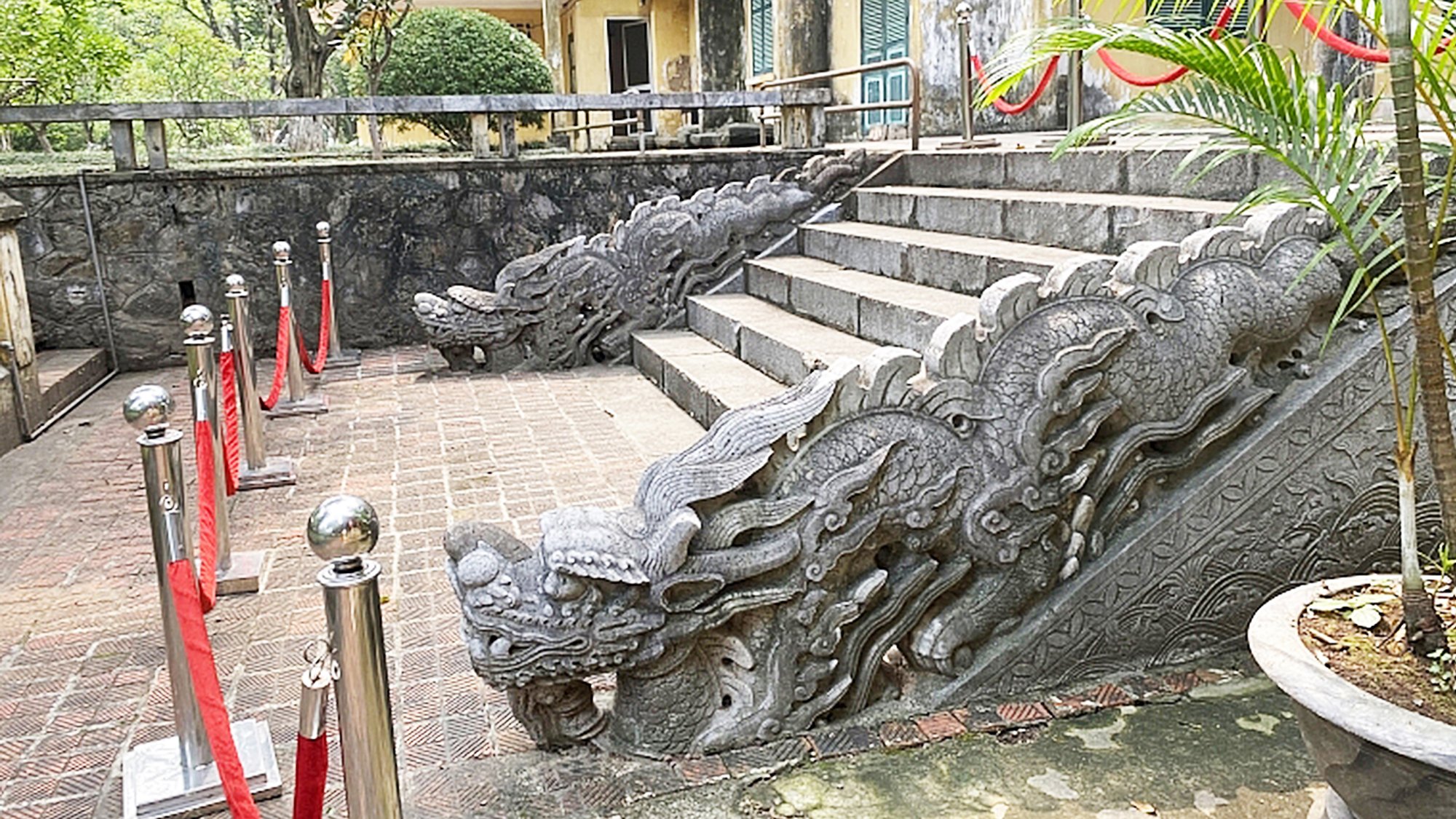
National treasure of the Le Trung Hung period
According to Associate Professor Dr. Tran Trong Duong (Institute of Han Nom Studies), since the Ly Dynasty, we have seen a clear concept of the dragon image as the most important symbol for the emperor. This is shown through the data of the Sung Thien Dien Linh stele, an official stele of the royal court composed by Minister Nguyen Cong Bat and personally inscribed by Emperor Ly Nhan Tong on the stele and engraved in 1121.
Also from the time of moving the capital in the year of Canh Tuat, from Thang Long to Hanoi today, this land has been built and protected by many talented generations, worthy of being the "eternal capital". For nearly 1,000 years, from the Ly Dynasty to the end of the Nguyen Dynasty, the dragon became a mascot symbolizing the supreme central power, associated with the king, the royal court and the royal family. The image of the dragon was also specially attached/solemnly painted on the royal utensils (the king's belongings) in the palace, on ceremonial symbols, on high-ranking official costumes.
Fireworks light up New Year's Eve: People hope for a peaceful and prosperous Year of the Dragon
"Flying up" from the excavation pit
The image of the dragon is concentrated and dense in the world heritage site of the Imperial Citadel of Thang Long - Hanoi, especially on the national treasures preserved here. Up to now, the Imperial Citadel of Thang Long has 7 national treasures, of which 5 have the image of a dragon. These are the set of steps of Kinh Thien Palace from the early Le Dynasty; the dragon head of the Tran Dynasty; the collection of blue and white ceramic bowls and plates used by the royal family during the early Le Dynasty; the steps of Kinh Thien Palace from the late Le Dynasty; and 2 royal porcelain bowls used during the early Le Dynasty. The remaining two national treasures are the cannon from the late Le Dynasty and the phoenix bodhi leaf.
Kinh Thien Palace, built in 1428 under the reign of King Le Thai To and completed in 1467 under the reign of King Le Thanh Tong, is the center of the heritage site. The set of steps of Kinh Thien Palace from the early Le Dynasty, including two steps carved with dragons in the middle and two steps carved with clouds and dragons on both sides, became a National Treasure in 2020. This set of steps is located on the main entrance and exit of Kinh Thien Palace. The stone dragons of the early Le Dynasty have a muscular shape, their heads raised high and majestic, and their seven body segments gently undulating like waves from top to bottom.
The dragon terrace here also gives the building there a name bearing historical significance - Dragon House. On the old palace foundation was the meeting room of the General Headquarters during the resistance war against the US and Dragon House marked many historical decisions from the highest level. Therefore, the building where the dragon terrace was located during the early Le Dynasty is also a "dual relic" bearing historical and cultural values from the medieval period and modern historical values.
Along with the large front rampart, the ancient Kinh Thien palace area also retains a second rampart created during the Le Trung Hung period (17th - 18th century) on the back path, on the left. This rampart was recognized as a National Treasure in January 2023. The pair of dragons in the rampart during the Le Trung Hung period also "walk" from top to bottom with a sturdy shape, the dragon body still has seven curves, has many fire crests, but the tail segments are more stretched. Under the dragon body are carved images of fish transforming into dragons, phoenixes, and lotus flowers on a background of cloud clusters. It can be said that both sets of dragon ramparts in Kinh Thien palace have unique and special stone sculpture artistic value.
At the Imperial Citadel of Thang Long, there is also a national treasure depicting a dragon head from the Tran Dynasty. This dragon head is a large and intact round terracotta statue, an important decorative detail on the roofs of Ly and Tran Dynasty architectures, placed at the "Kim" position (the top of the gable of the building) with the spiritual meaning of praying for the building to avoid fire. According to Associate Professor, Dr. Tong Trung Tin, Chairman of the Vietnam Archaeological Association, the dragon head was once brought to Germany for display to introduce Vietnamese archaeological treasures.

National treasure: Tran Dynasty Dragon Head
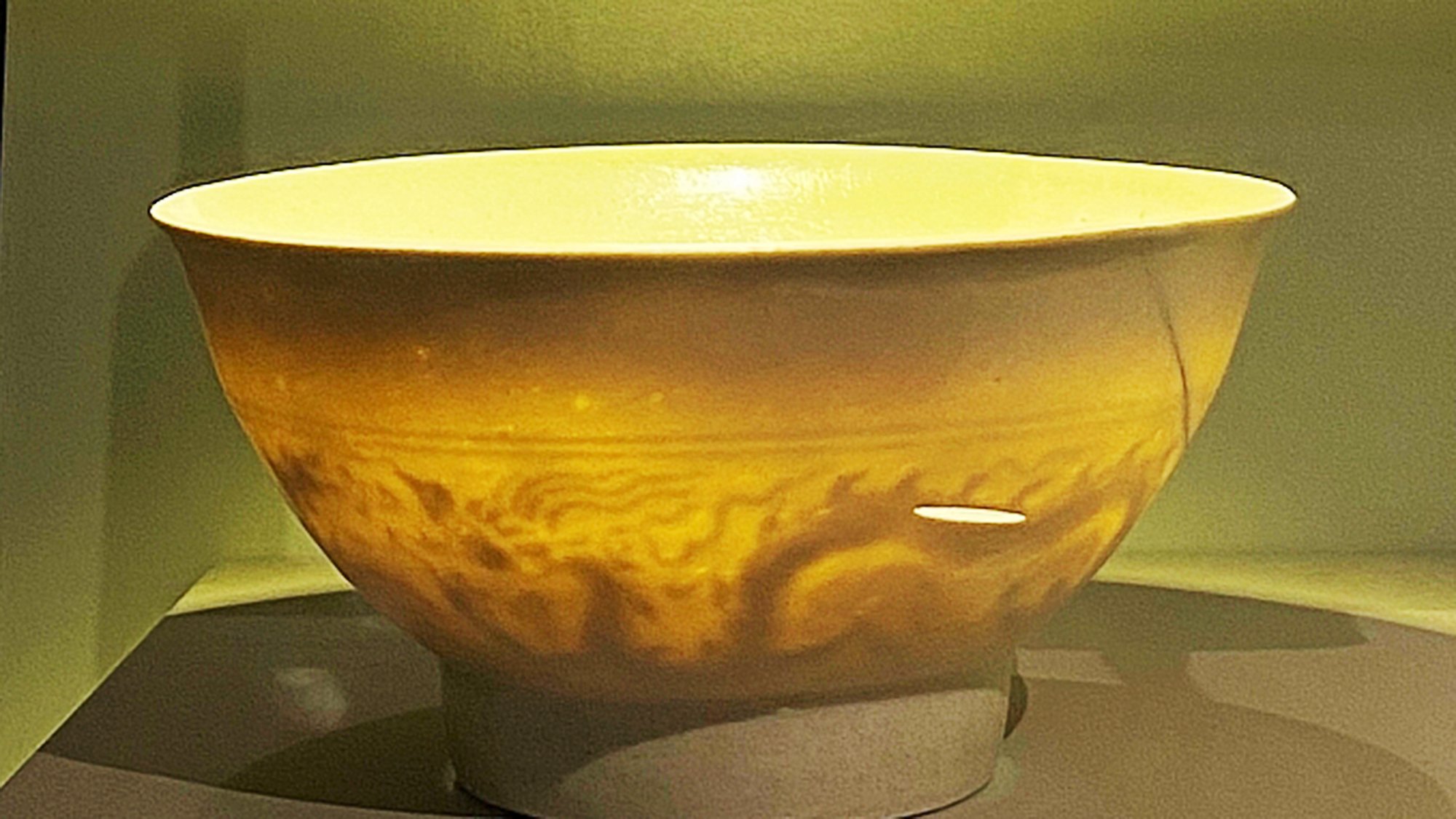
Dragon decoration inside a translucent royal bowl from the early Le Dynasty
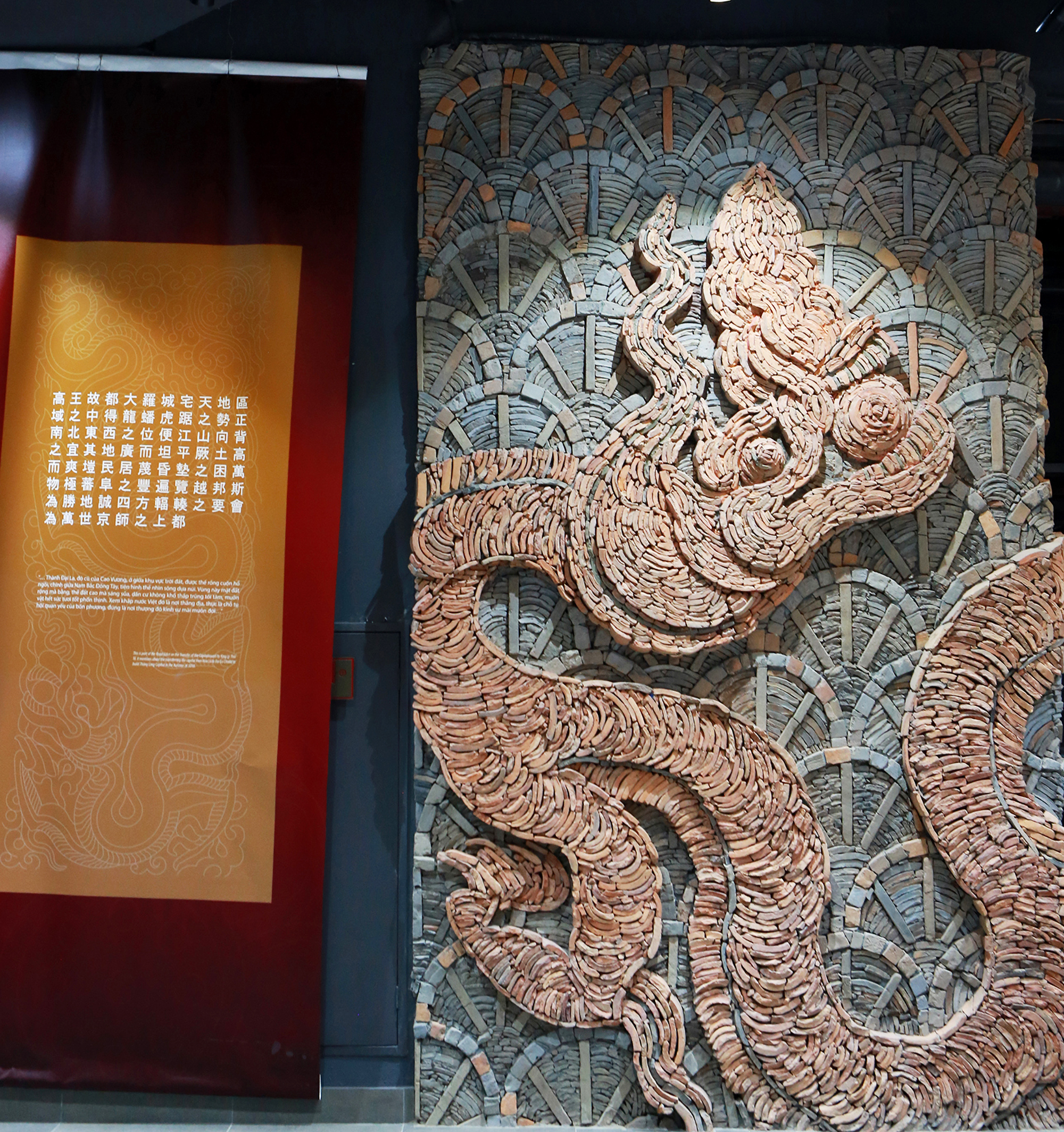
Dragon mosaic from broken tiles at Thang Long Imperial Citadel
The dragon's head shows the dragon as if it is "flying", its mane and crest facing backwards, its mouth holding a precious pearl, its nose and upper lip turning into an S-shaped crest of fire, its fangs long and curved along with the crest of fire, its small, long tongue covering the precious pearl and also curving along with the crest of fire very vividly... This treasure helps researchers identify the architectural roofs of the Ly and Tran dynasties, and also proves the inheritance and continuity in the artistic changes of the Tran dynasty compared to the art of the Ly dynasty.
The dragon image is also the main decorative motif on other national treasures in the Imperial Citadel. Two royal porcelain bowls (king's utensils) from the early Le Dynasty with white glaze, very light and translucent were recognized as National Treasures in 2021. In the bowls, there are two dragon images with five sharp claws, chasing each other clockwise. The five-clawed dragon image is a symbol of the king's supreme power, confirming that these are royal utensils.
The collection of royal ceramics from the early Le Dynasty was recognized as a National Treasure in 2023, including blue-glazed ceramic bowls and plates with superior ceramic crafting techniques and high firing temperatures. Since they were used by the king, the main decorative motif was of course the dragon, the surrounding patterns were meticulous and sophisticated, the inside was written with the word "Kinh" (敬) or embossed with the word "Quan" (官) - a way to clearly identify the brand of ceramic workshops that only made products for the royal palace.
Continue the dragon story
The "dragon story" in Thang Long Imperial Citadel is not only in the national treasures but also in the exhibitions related to the heritage site. One such exhibition is the exhibition about the Imperial Citadel called "Archaeological discoveries underground of the National Assembly ". The Imperial Citadel Research Center (the predecessor of the Imperial Citadel Research Institute) at that time recreated an architectural floor plan of the Ly Dynasty of Thang Long Imperial Citadel here with many architectural artifacts such as large roof tiles shaped like Bodhi leaves to decorate dragons, covering the middle of the roof of the Ly Dynasty palace...
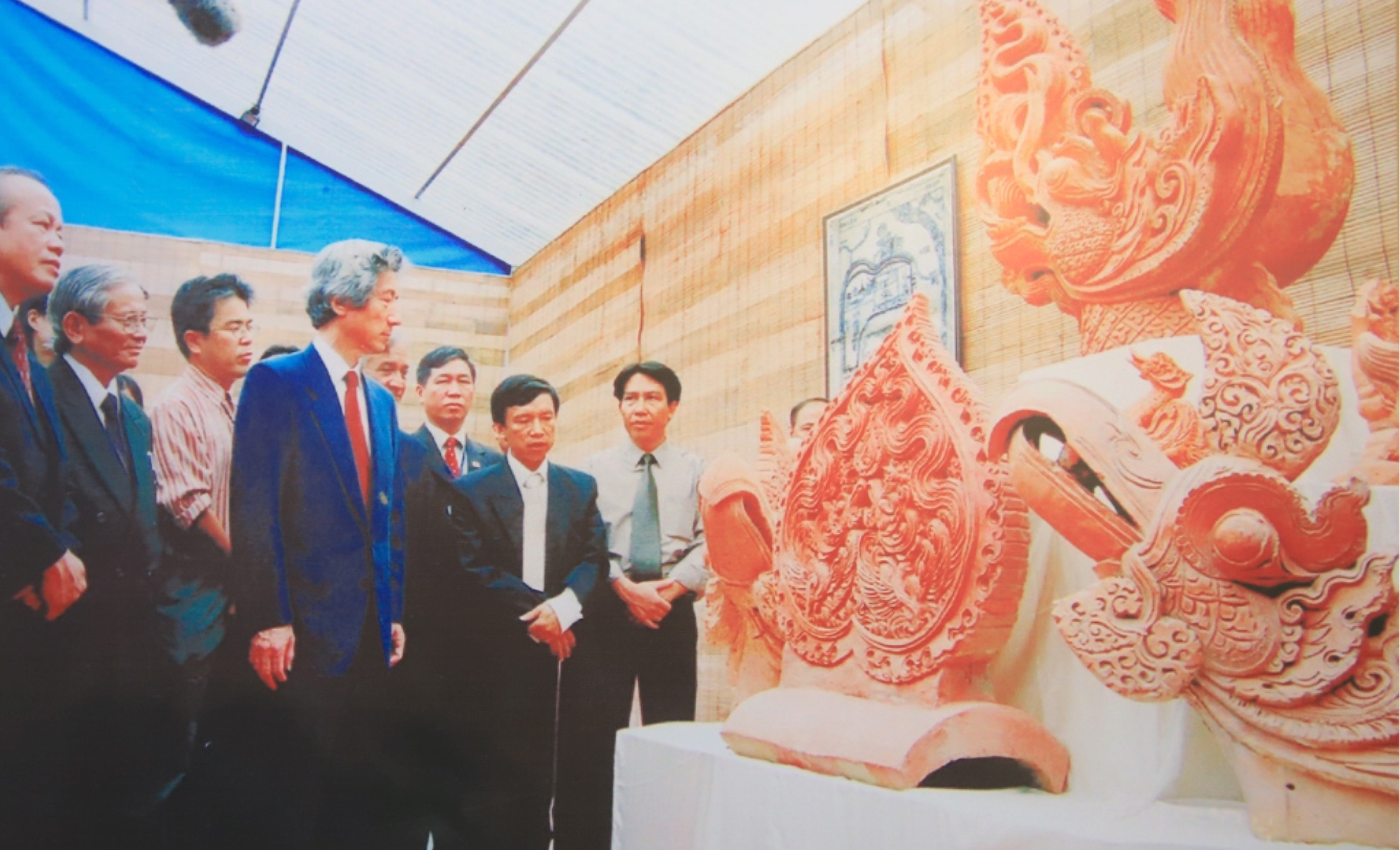
Japanese Prime Minister Koizumi Junichiro visited the excavation site of Thang Long Imperial Citadel in 2004.
TL Imperial Citadel of Thang Long
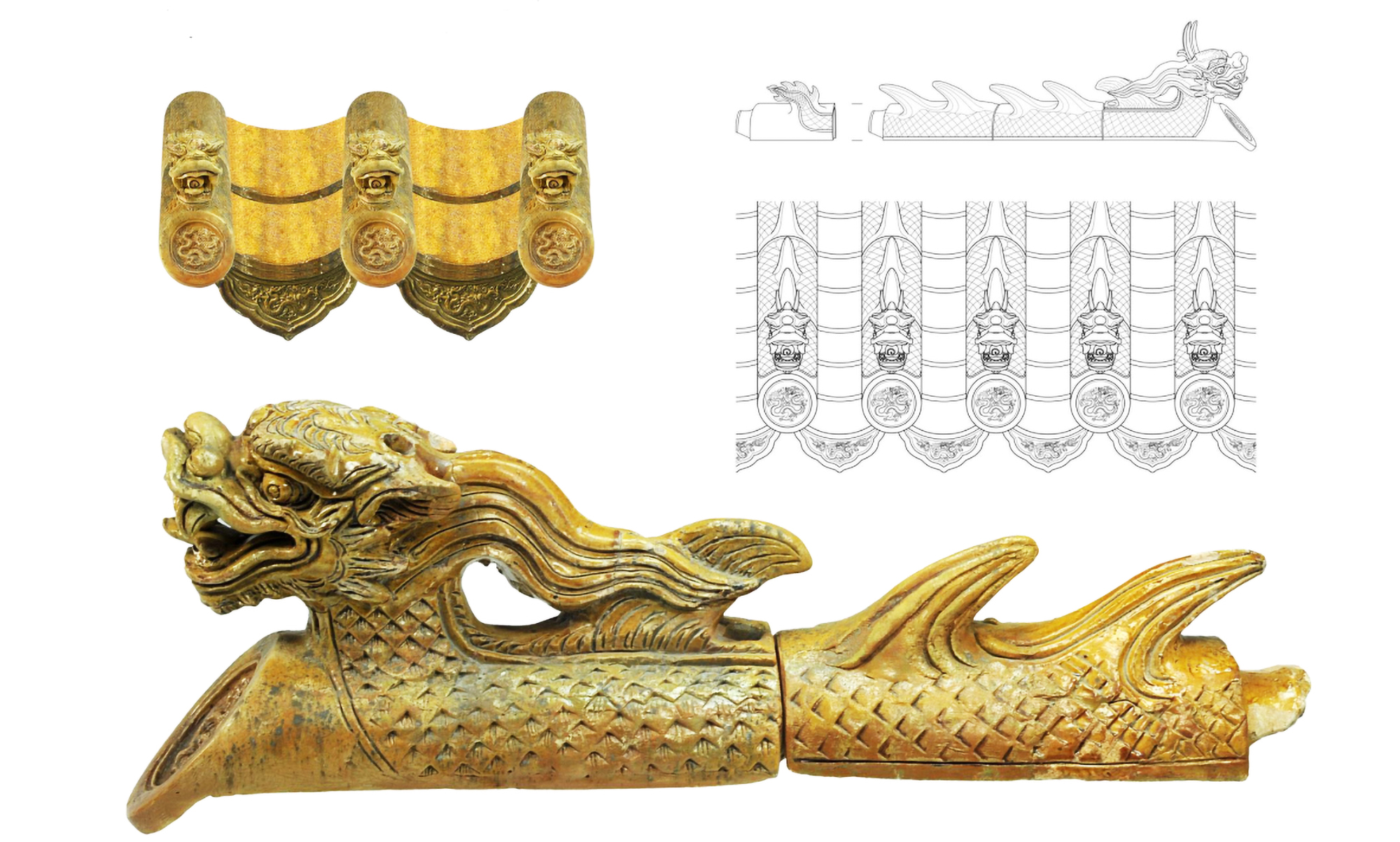
Dragon tiles of Kinh Thien Palace
Imperial Citadel Research Institute
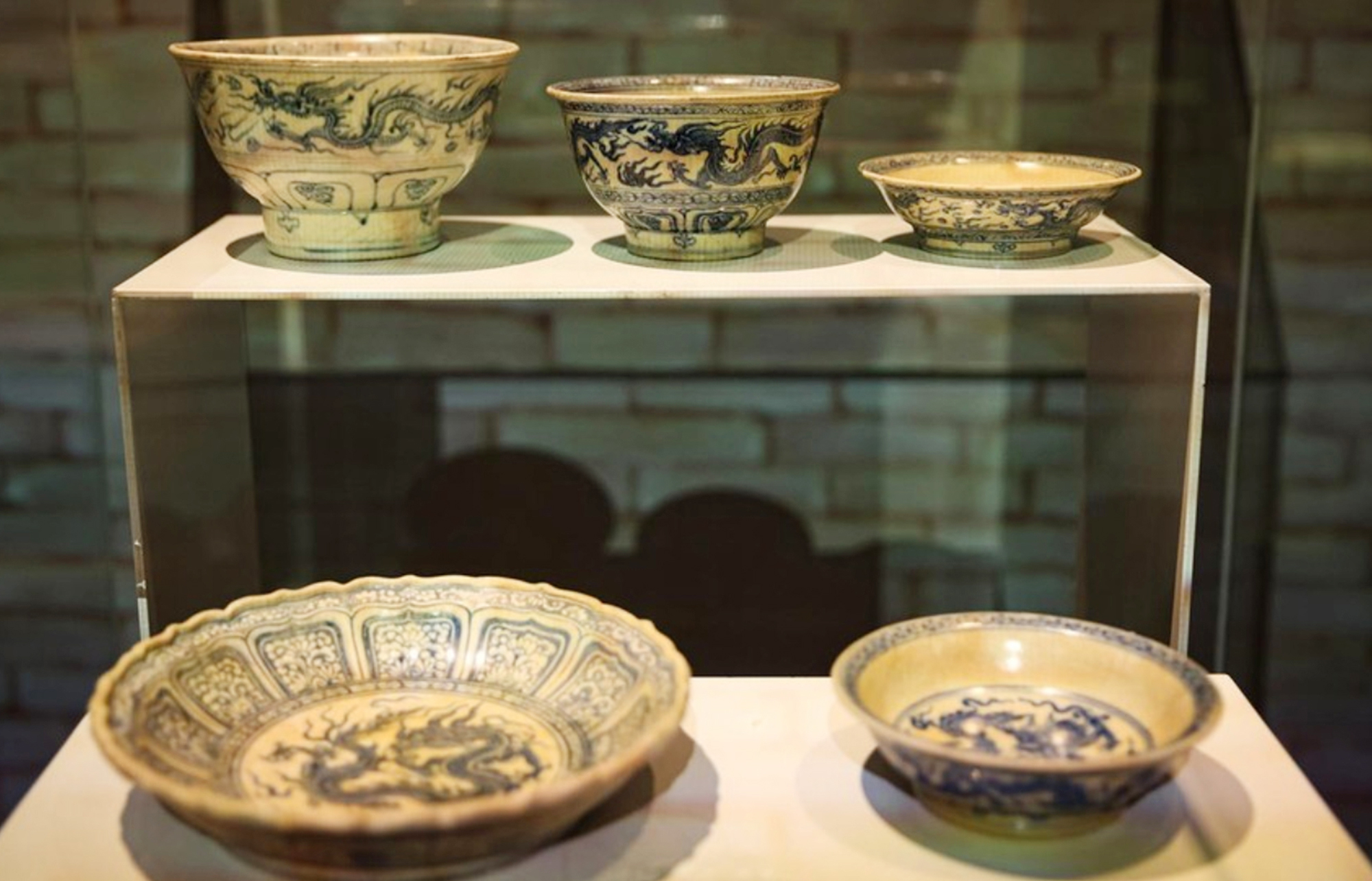
Dragon decoration on national treasures of royal ceramic collection of the early Le dynasty
Pieces of bricks and tiles found at the excavation pit in Thang Long Imperial Citadel were also assembled into a ceramic painting called "Thang Long Dawn". The painting is placed next to the content of the Proclamation on the Transfer of the Capital in the exhibition "Archaeological discoveries underground of the National Assembly building", bringing back the feelings of Thang Long Imperial Citadel under the Ly Dynasty. "That is also a way to promote heritage", Associate Professor, Dr. Bui Minh Tri, Director of the Institute of Imperial Citadel Studies, said.
Most recently, the "dragon story" of Thang Long Imperial Citadel was continued when the Institute of Imperial Citadel Studies published the image of Kinh Thien Palace during the early Le Dynasty. The recreated model shows that the palace has a brilliant yellow roof. Associate Professor, Dr. Bui Minh Tri said: "Dragon tiles are the special feature of this palace. Archaeologists found yellow and green glazed dragon tiles. These pieces of head, body, and tail formed a complete dragon shape. We compared the architectural materials at Thang Long Imperial Citadel with palaces in East Asia, especially China, and found that this is a type of tile that only exists in Vietnam. It brings the unique features of the architecture of the early Le Dynasty."
Research on dragon images and dragon-shaped architectural materials will continue. Through this, the "dragon story" in Thang Long Imperial Citadel will continue to be told in new ways, both nostalgic and updated with modern research.
Associate Professor Dr. Tran Trong Duong (Institute of Han Nom Studies) said that the legend of Ly Thai To's capital transfer with the meaningful name "Thang Long" is an important sign that the capital transfer from Hoa Lu to Dai La must have been advised by Confucian scholars. "Confucian allusions are filled in the Edict on the Transfer of the Capital with Chinese-style political figures. That not only enhances the beauty of the new capital's military position, but also implies the beauty of royalty, "the land of flying dragons" with the shape of "coiled dragons, sitting tigers". That is a message about the land of the emperor", he commented.
Associate Professor Dr. Bui Minh Tri, Director of the Institute for Imperial Citadel Studies, said that the two royal porcelain bowls from the early Le Dynasty were already famous before becoming national treasures. They were used as "ceramic diplomacy" since 2004. When French President Jacques Chirac and Japanese Prime Minister Koizumi Junichiro visited the Thang Long Imperial Citadel relic site, they were invited to see these two artifacts. Associate Professor Dr. Tri said: "Both guests admired and praised the noble rank, excellent quality, and exquisite beauty of the dragon pattern when admiring this bowl."
Regarding the national treasure of the dragon head of the Tran Dynasty, before the time Hanoi celebrated the 1,000th anniversary of Thang Long, a beautiful terracotta dragon head was discovered in the excavation pit. Associate Professor, Dr. Tong Trung Tin, then Director of the Institute of Archaeology, recalled: "It was a large dragon head that was almost intact. In the delicate and difficult details showing high craftsmanship, the dragon head was intact. There were also some other pieces around. We recorded and brought that dragon head back." Later, that dragon head became a national treasure, Associate Professor, Dr. Tong Trung Tin was also a member of the National Heritage Council that reviewed the list of treasures.
Source link


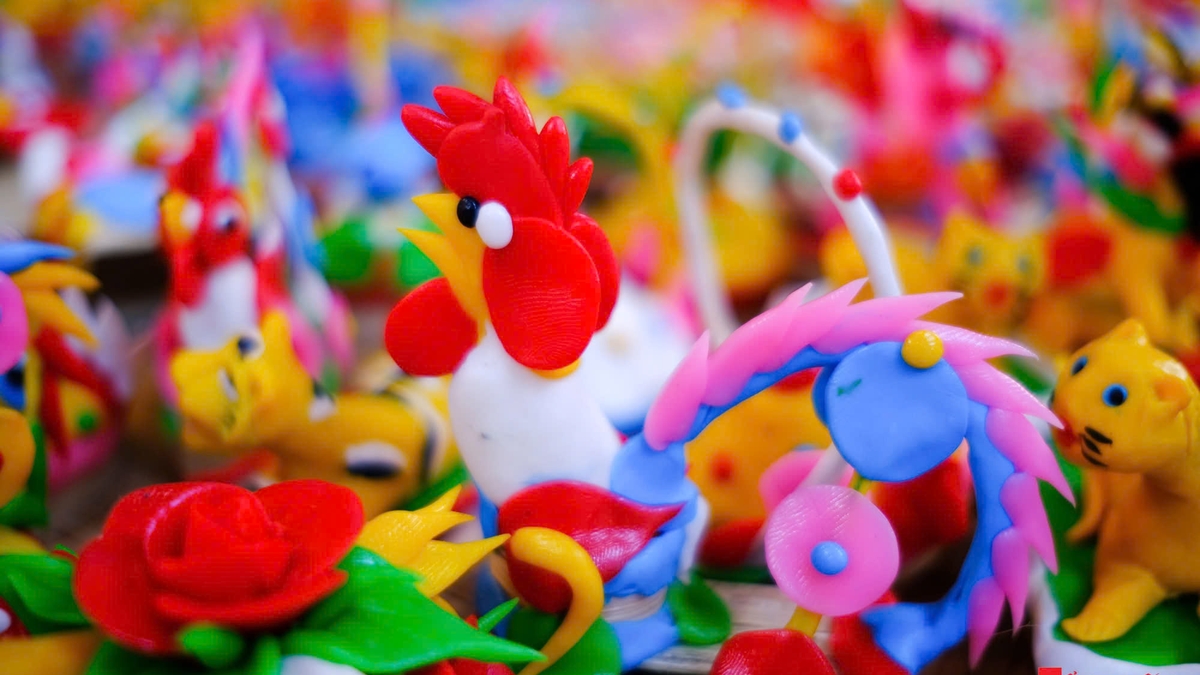
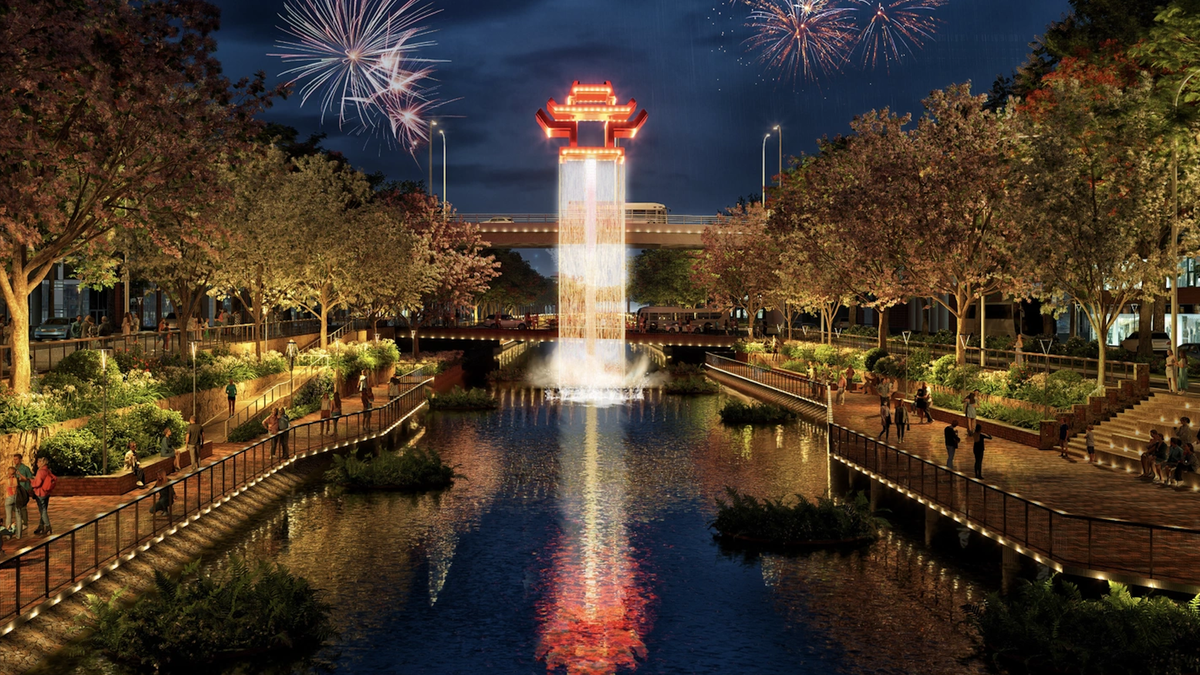
![[Photo] Hanoi morning of October 1: Prolonged flooding, people wade to work](https://vphoto.vietnam.vn/thumb/1200x675/vietnam/resource/IMAGE/2025/10/1/189be28938e3493fa26b2938efa2059e)

![[Photo] President of the Cuban National Assembly visits President Ho Chi Minh's Mausoleum](https://vphoto.vietnam.vn/thumb/1200x675/vietnam/resource/IMAGE/2025/10/1/39f1142310fc4dae9e3de4fcc9ac2ed0)
![[Photo] Keep your warehouse safe in all situations](https://vphoto.vietnam.vn/thumb/1200x675/vietnam/resource/IMAGE/2025/10/1/3eb4eceafe68497989865e7faa4e4d0e)




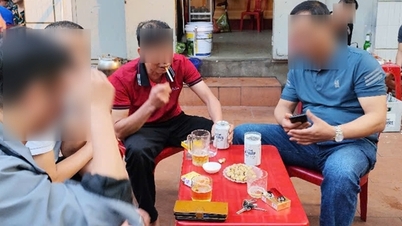
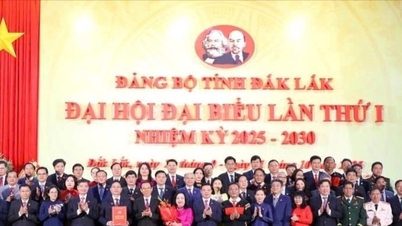

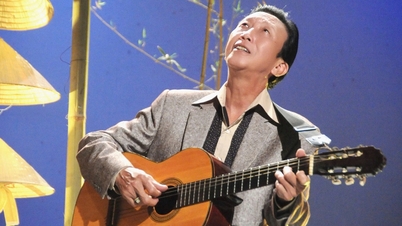
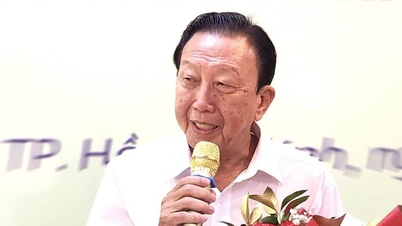





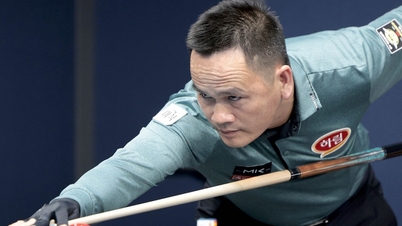


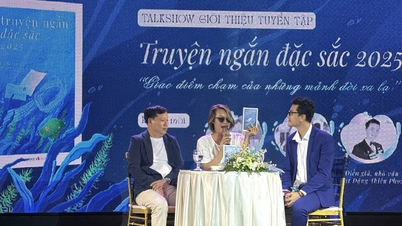
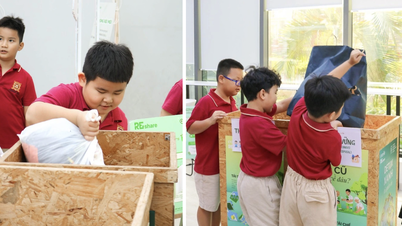
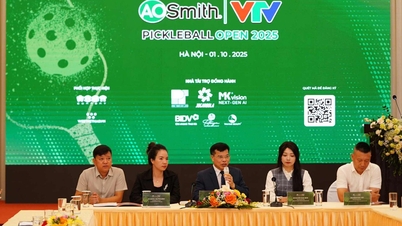



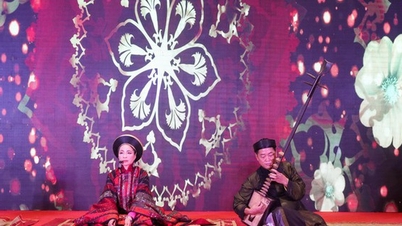


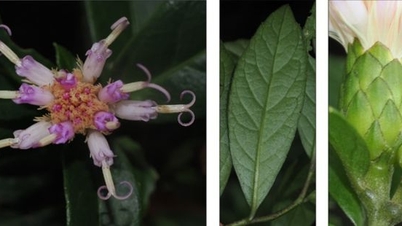

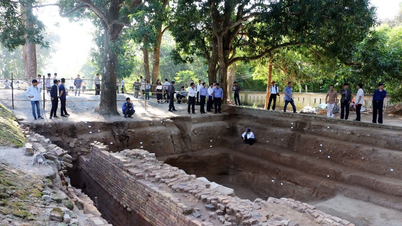

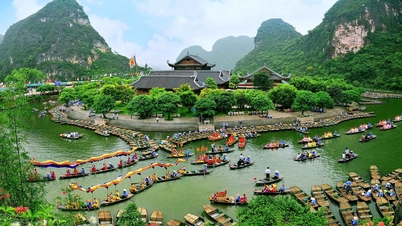


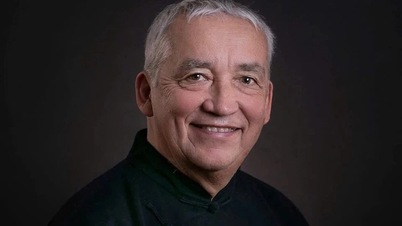




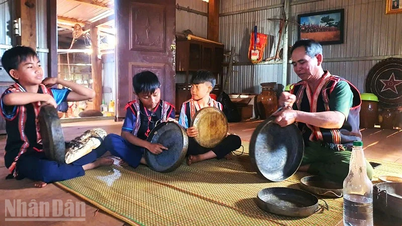




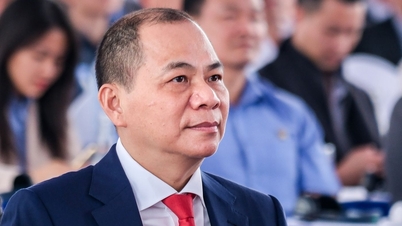
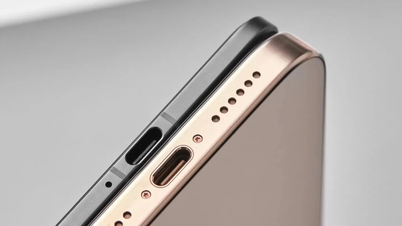


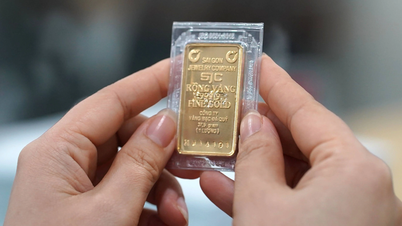
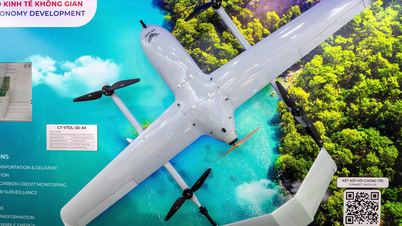


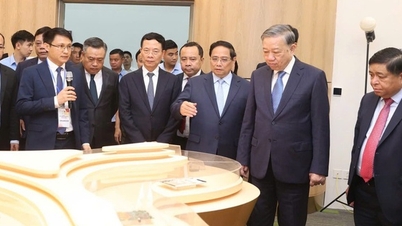


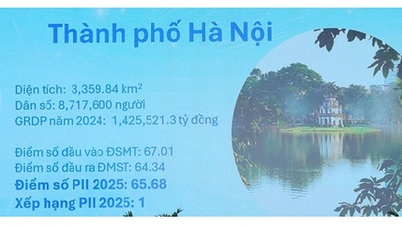
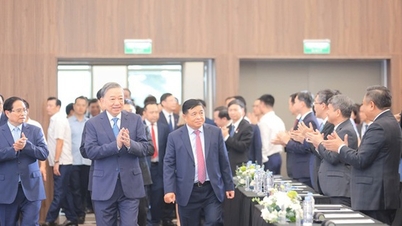
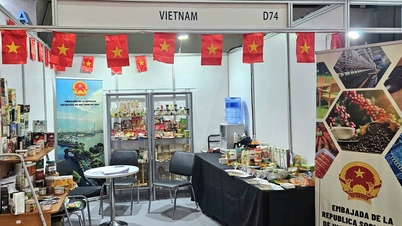




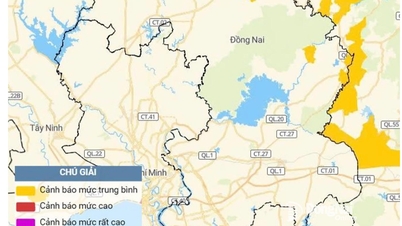

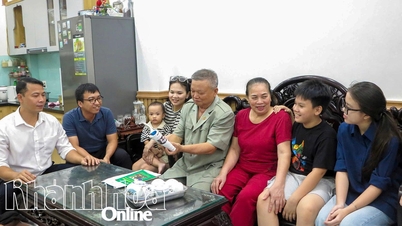



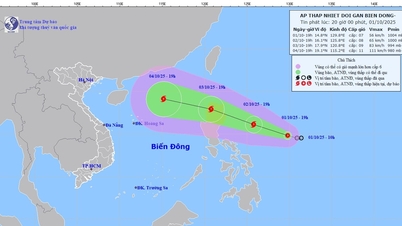







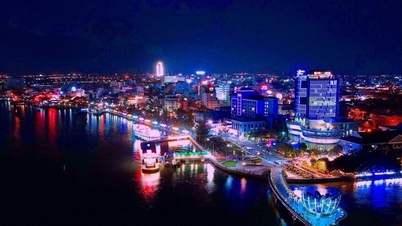






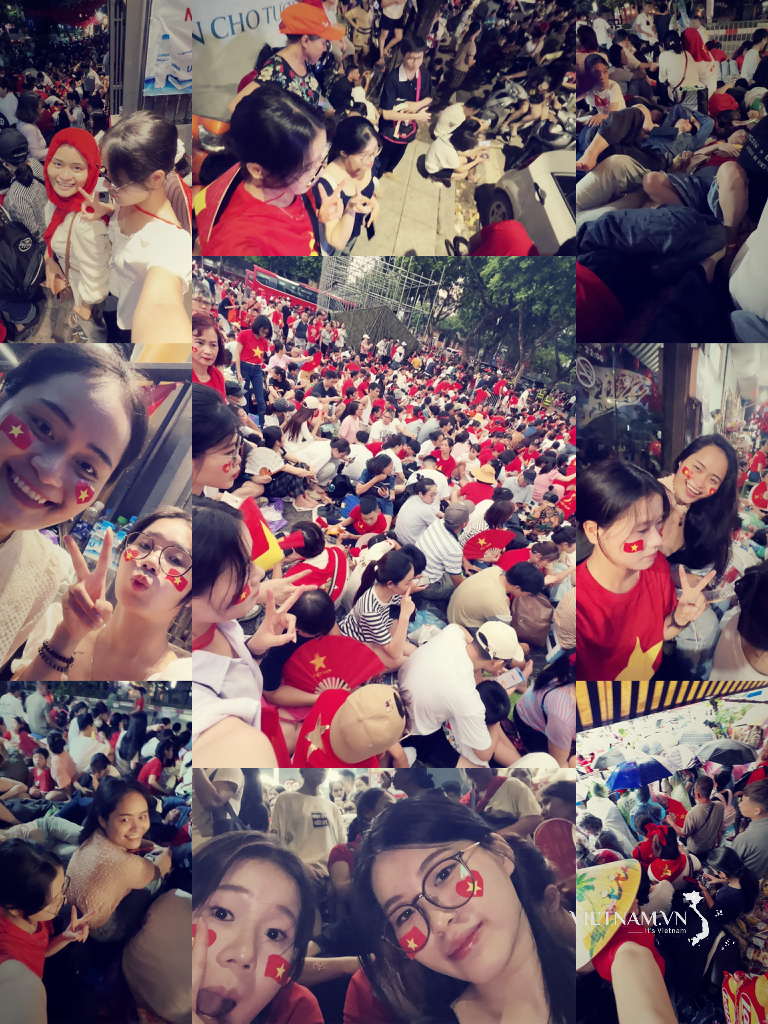
Comment (0)